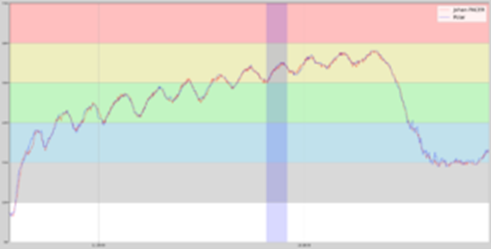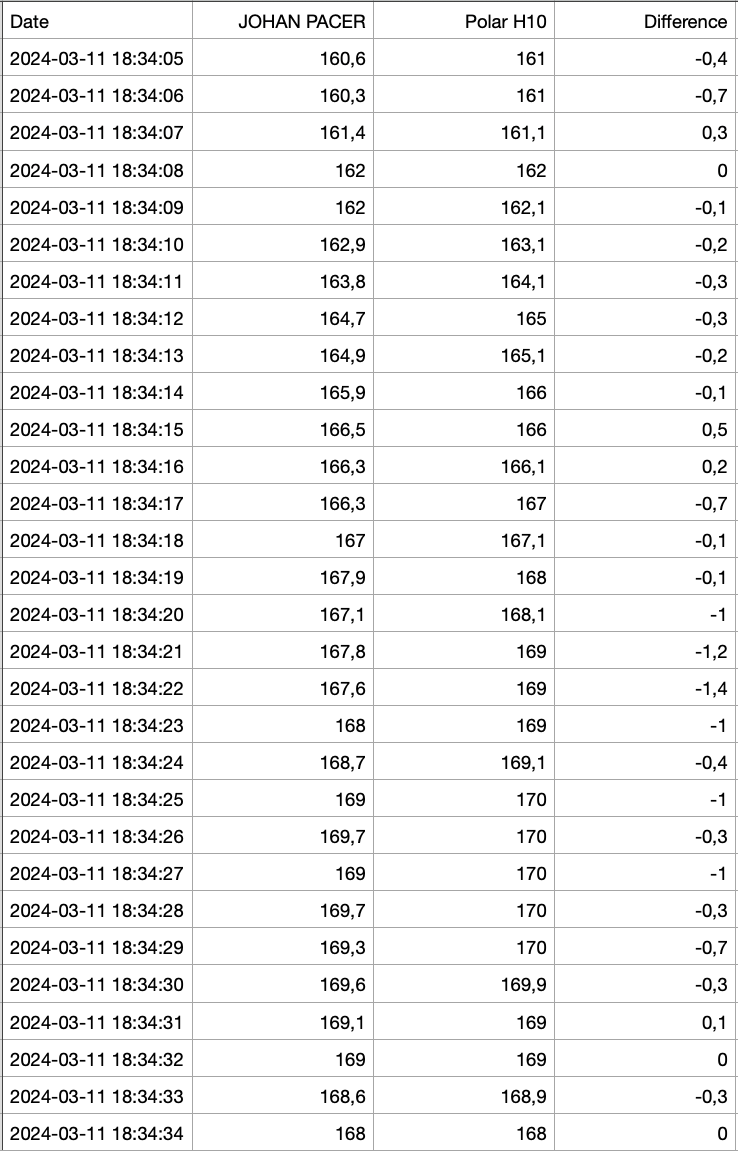Heart rate monitoring serves as a vital tool for assessing athletes’ cardiovascular responses during training and matches. Therefore we compared the JOHAN PACER system with a Polar H10 sensor to assess the accuracy of heart rate during an Interval Shuttle Run Test (ISRT), a widely used method for assessing athletes’ aerobic capacity and performance. By examining the performance of JOHAN PACER and Polar H10 in this controlled setting, we can gain valuable insights into the accuracy and reliability.
Method
To conduct our comparison, we organized an Interval Shuttle Run Test (ISRT) at a local sports club. This test is commonly used by sports teams to evaluate players’ fitness levels, making it an ideal scenario for comparing heart rate data. During the test, a player wore the JOHAN PACER sensor integrated into a vest that measures heart rate. In addition, a separate Polar H10 sensor was placed on a traditional heart rate belt for comparison purposes. Notably, the JOHAN PACER system eliminates the need for a separate heart rate belt, simplifying the monitoring process and enhancing player comfort. To ensure optimal connectivity, both the vest and the belt were lightly sprayed with water. The player successfully completed the full submaximal ISRT, allowing for a comprehensive evaluation of heart rate monitoring efficacy.
Results
Following the ISRT, the heart rate data collected from both devices were uploaded to the cloud platform of JOHAN for analysis. A direct export of the Polar H10 heart rate data per second was compared with the JOHAN PACER heart rate data per second. The results revealed a remarkable similarity between the measurements obtained from both devices, with a difference of less than <1%. This finding underscores the accuracy and reliability of the JOHAN PACER system in capturing heart rate data during dynamic physical activities, eliminating the need for a separate Polar H10 sensor on a belt.

Graph 1: JOHAN PACER vs Polar H10 during ISRT *Highlighted in blue is the Sample set data
Discussion
The close agreement in heart rate data between JOHAN PACER and Polar H10 highlights the effectiveness of both technologies in capturing physiological responses during the ISRT. Importantly, the JOHAN PACER system offers a distinct advantage by integrating the heart rate sensor directly into a comfortable and practical vest, eliminating the inconvenience of wearing a separate heart rate belt. This innovative approach not only streamlines the monitoring process but also enhances player comfort and compliance. Sports teams can confidently rely on the JOHAN PACER system to provide accurate and reliable heart rate data without the need for additional equipment.

Conclusion
In conclusion, this test demonstrates the comparable accuracy and reliability of heart rate data obtained from the JOHAN PACER system and a Polar H10 sensor during the Interval Shuttle Run Test. By integrating the heart rate sensor into a practical vest, the JOHAN PACER system eliminates the need for a separate heart rate belt, offering a more convenient and comfortable solution for athletes and sports teams. Moving forward, the JOHAN PACER system represents a cutting-edge innovation in sports technology, providing sports teams with a reliable tool for monitoring athletes’ physiological responses and optimizing performance.
